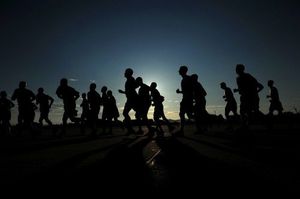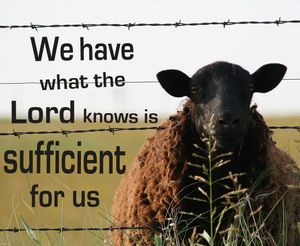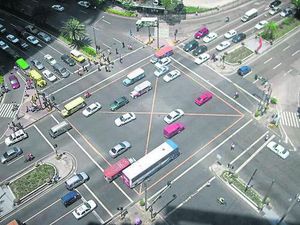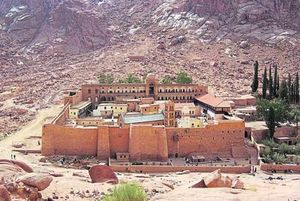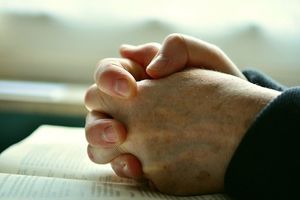The Bible uses many illustrations of the Christian life. It is pictured as a warfare, an employment, and as membership of a family. There are also several athletic illustrations, and in Hebrews 12:1-3 the author speaks of it as a race.
The readers may not have had TV then, but they were familiar with the Greek games. There are a number of well-preserved ancient stadiums in the Near East, and it is not hard to imagine spectators gathered to watch the competition.
In Hebrews 11 we read of the Old Testament heroes of faith. They had finished their course and, in the mind of the author, had taken their seats as spectators. ‘Now it’s your turn to run’, he implies.
What kind of a race?
As followers of Christ, then, we are in the Christian race. What kind of race is it? Certainly not a sprint. It is an endurance race. It is to be run with ‘perseverance’, says our text.
In my running days I was a sprinter; a marathon was far too long for me. But our race is longer still. It is a life-long race, though it starts at conversion, not at birth. It is the Lord who puts us in this race. He is ‘the author [or starter] of our faith’, says Hebrews 12:2.
How are we to run? There are two very simple principles in these verses. Negatively, we are to throw off everything that hinders; and positively, we are to run with our eyes fixed on Jesus. Let’s look at these two things.
Hindrances
When athletes warm up for an event, they usually wear jogging suits. But when they compete, they discard all unnecessary clothing. They do not want anything to restrict their movement or cause extra wind resistance. We are to do the same in the Christian race. What hinders us? Obviously, sin. It saps our zeal, spoils our fellowship with God and mars our testimony.
If we are serious about the Christian life, we will want to ‘lay aside … the sin which so easily entangles us’ (12:1) . Some sins will be put away once and for all. If I was a burglar before conversion, this must be put away at once. What would other believers think if I thanked the Lord that I was now only committing one burglary a month?
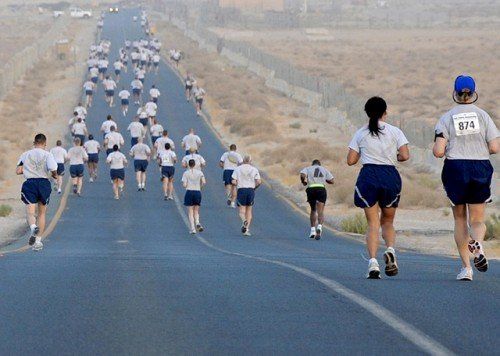
But other sins are ingrained into our character, and things like pride, a sharp tongue or a bitter spirit will take a long time to overcome – probably the rest of our life. But all sin needs to be attacked.
Put sin away
The Bible uses several pictures for the putting away of sin – for example, taking off dirty clothes. The ‘filthy garments’ of sin need to be removed and replaced by the new clothing of godliness.
This is something only Christ can do for us of course (Zechariah 3:4), but we too have a part to play in putting off ‘the old man with his deeds’ and putting on the new man (Colossians 3:8-14).
Mutilation is also used to picture the removal of sin. If your eye causes you to sin, it is to be plucked out. If a hand offends, it is to be cut off (Matthew 5:29-30). This is not to be taken literally, but to indicate that drastic measures are sometimes needed in dealing with sin.
Another picture is that of mortification. The misdeeds of the body are to be ‘put to death’ (Romans 8:13). We are to wage all-out warfare against sin. It is not to be trifled with.
Sin entangles
Any activity or habit that hinders us must be put away. An activity may not be sinful in itself, but it can still hinder us. I am a bird-watcher. There is surely nothing wrong with enjoying the sights and sounds of God’s creation. But if I spent hours every day watching birds to the neglect of my family and church, that would be wrong and seriously hinder my spiritual life.
It is good to stop and look back to see how far we have travelled. Are we making progress? Can we rejoice that the Lord has enabled us to overcome certain sins? Or are there still serious hindrances in our lives?
Top athletes are never satisfied with their performance, and are always trying to improve. If the fastest sprinter on earth feels he can improve his start, he works on it. Should we show less dedication?
Looking to Jesus
We now turn to the positive aspect of the race. Jesus is like an invisible pacemaker. In some races, they have a ‘designated rabbit’, a runner whose job is to set a fast pace. Eventually, of course, the pacemaker drops out leaving the others to race to the finish.
Jesus is our pacemaker. He has gone before us and is always there to encourage. Unlike a human pacemaker, however, he never drops out. He is there to the end, seeing that he is both ‘the author and perfecter [or finisher] of our faith’. We need to fix our eyes on him, says Hebrews. Why is that? Because he is the only one who ever ran a perfect race.
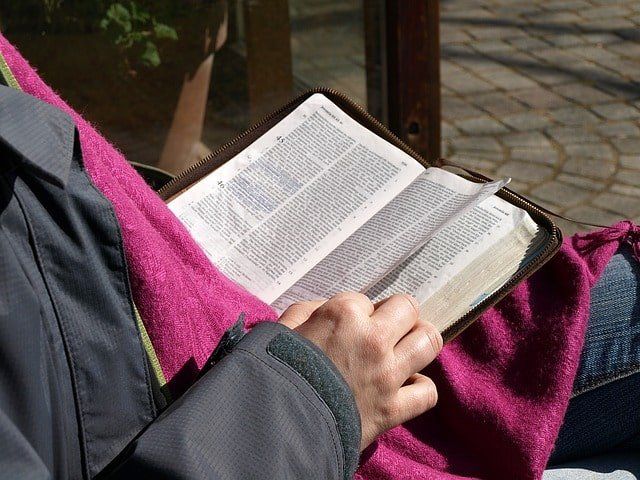
We all look for role-models, but sooner or later most of them let us down. Jesus never will – he is the perfect example and we need to look to him continually. Paul said: ‘For me, to live is Christ’ (Philippians 1:21).
Christ in all the Scriptures
How do we do that? Buy a picture of Jesus and gaze at it? No. We have no idea what he looked like anyway. The gazing is spiritual not physical. We ‘fix our eyes’ on Jesus as he is revealed to us in Scripture.
Christ is to be found throughout Scripture. We find him in the Old Testament as we study the many types, prophecies and promises concerning him.
We see him in the New Testament, nearly half of which is devoted to accounts of Jesus’ life. The Gospel writers – all writing by divine inspiration – knew it was important for people to know the life, teaching and character of Jesus. We do well to read them often.
God with us
We fix our eyes on Christ at Bethlehem. This baby is none other than Emmanuel – God with us! What amazing condescension that the Creator should humble himself to take human form!
We watch him as he grows up. There is little written about his childhood, but even at 12 he was conscious of his calling – he had to be about his Father’s business (Luke 2:49).
We observe his miracles, teaching and compassionate dealings with men and women. They are beautiful to see and even unbelievers find his adult life compelling. This is no ordinary life. This is God’s Son, living sinlessly in this world.
We fix our eyes on Jesus on the cross, for there ‘he bore our sins in his body on the tree that we … might live for righteousness’ (1 Peter 2:24).
The accounts of the crucifixion are written in a very matter-of-fact way. Jesus’ sufferings and death could easily have been recorded in such a way to move us to tears, but it seems that the writers wanted to avoid this. Why? Because we must see his death as more than a martyrdom. He died as a sacrifice and substitute for his people. He bled to cleanse us from our sins.
God does not want us to feel sorry for Jesus, but to believe on him – to be brought to repentance and faith in him. I need to see the wondrous grace that was manifested when the Son of God ‘loved me and gave himself for me (Galatians 2:20).
The empty tomb
We fix our eyes, expectantly, on the tomb. For he rose again from the dead to declare us righteous in the sight of God (Romans 4:25). After 40 days he ascended into heaven. There he intercedes for us. How blessed to gaze upon our great high priest and Mediator, who sits triumphantly at God’s right hand!
We need still to fix our eyes on him because, in all our living and serving, we must be motivated by him who has finished his work and will soon return to take us home.
Long-distance runners are often tempted to drop out of a race. We must never do that. We too are tempted, but with our eyes fixed on him we are enabled to keep going. Moses was tempted many times to give up on the Israelites, as he witnessed their rebellion – but he kept going. How did he manage that? He persevered because he saw ‘him who is invisible’ (Hebrews 11:27).
May God help us to do the same!

